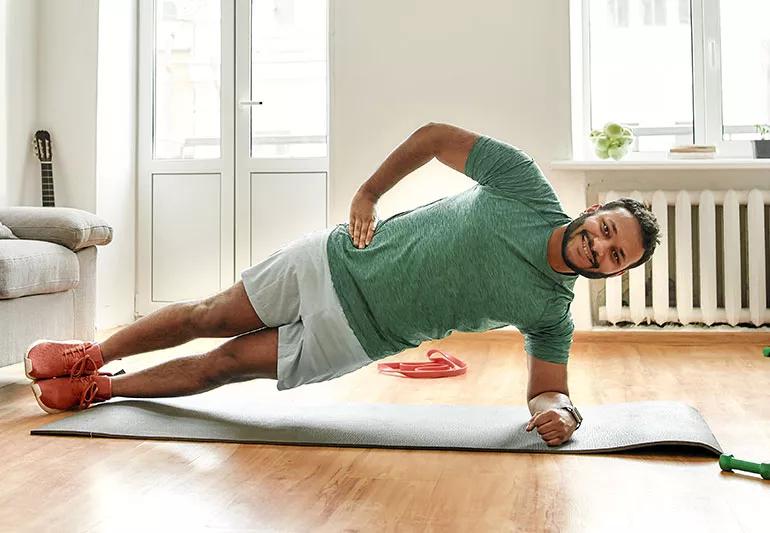Building core muscles will keep your spine healthy and strong

Your spinal system includes muscles along with the bones, discs, joints and ligaments in your trunk and abdominal area, together known as your core. Your back muscles are involved in every move you make. This complex system helps your body twist, turn, bend, extend and supports your spine with daily activities.
Advertisement
Cleveland Clinic is a non-profit academic medical center. Advertising on our site helps support our mission. We do not endorse non-Cleveland Clinic products or services. Policy
“Weakness, imbalance or tightness in the muscles that support the spine can make it more challenging to support the spine during daily activities,” says physical therapist and orthopaedic clinical specialist Ian Stephens.
At some point, 90% of adults have an episode of back pain that lasts at least a few days and interferes with activities. The majority of adults recover fully with no long term issues. Performing the right types of core strengthening exercises can reduce the risk of recurrent low back pain.
“There are a number of ways to strengthen the core,” Dr. Stephens says. “The exercise you choose will depend on how you are currently feeling and your overall fitness level. Be sure to discuss any exercise program with your doctor first. Physical therapists are experts in treating lower back pain and can help you develop an exercise program that is appropriate to your unique needs.”
The following exercises are for all levels and help build core muscles to protect your spine and prevent back pain.
Pool walking is a low-impact way to build core muscles. As you move, the core works against the force of the water. “This is gentle on extremities such as knees, hips, ankles and feet,” Dr. Stephens says.
Advertisement
Exercise videos or classes will help you understand how to use an exercise ball appropriately, and they’re easy to find online. These exercises are deceptively simple, he adds, and with practice you can increase intensity gradually.
A popular core booster is the side plank. To do it, lie on your right side with your right hand on the ground. Beginners should use your elbow. Lift yourself up to form a plank with your right arm straight and left arm at your side. Hold the position, then repeat. Be sure to keep your body in a straight line while tightening the abs and posterior.
Disciplines like tai chi, yoga and Pilates help target core muscles. Sign up for or subscribe to an online or in-person exercise class. Dr. Stephens notes that tai chi is low impact and ideal for people with a history of musculoskeletal problems. Choose relaxation yoga for lower impact. Pilates is centered around building core strength and improving posture.
“No matter what you do, the key is to find an activity appropriate for your body — one that you’ll enjoy and stick with so you can continue to build a strong, healthy back,” he says.
Advertisement
Learn more about our editorial process.
Advertisement

You can improve your athletic performance over time by breaking up your workout regimen into focused cycles

Shoulder rolls, hamstring stretches and calf exercises can all improve flexibility and endurance

Lower-intensity workouts can deliver high-quality health and fitness results

Incremental changes in your exercise routine can improve your strength and endurance over time

Understanding heart rate zones can help you tailor your workout to reach your goals

Increase the size of your muscles by bulking up on protein and focusing on slow, intense movements with progressive overloading

Low-impact exercises help you recover faster between sets, during cool downs and on rest days

Eccentric is slow and steady, while concentric is fast and controlled

Start having sex about 72 hours before ovulation, then at least every other day during your fertile window

Attachment theory suggests that your earliest relationships shape connections throughout your life

It isn’t a recognized mental health disorder, but research shows that problematic social media use can negatively affect your mental health, self-esteem and sleep